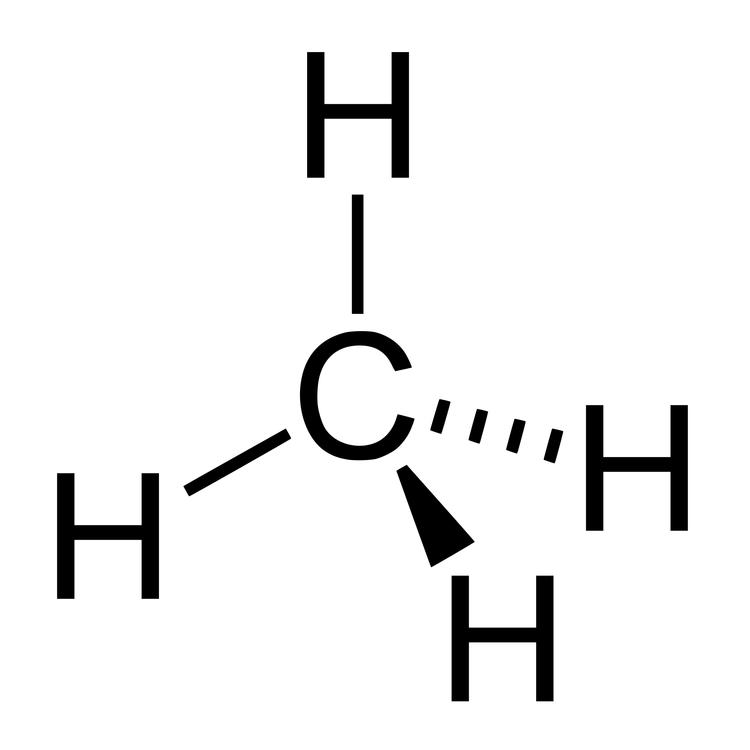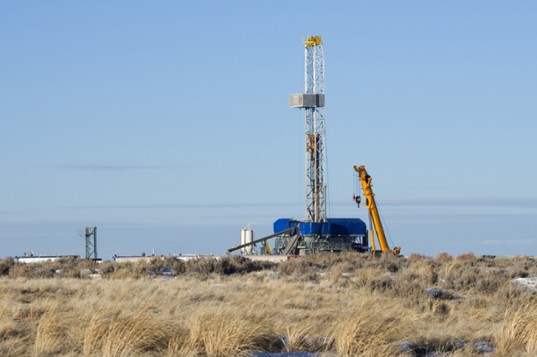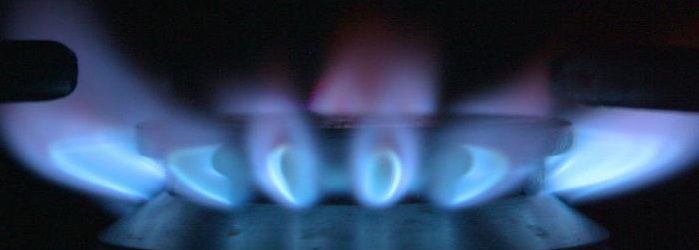object(WP_Query)#11046 (63) {
["query"]=>
array(2) {
["tag"]=>
string(27) "environmentlet-gotechnology"
["post_type"]=>
array(2) {
[0]=>
string(12) "tribe_events"
[1]=>
string(4) "post"
}
}
["query_vars"]=>
array(68) {
["tag"]=>
string(27) "environmentlet-gotechnology"
["lang"]=>
string(2) "en"
["error"]=>
string(0) ""
["m"]=>
string(0) ""
["p"]=>
int(0)
["post_parent"]=>
string(0) ""
["subpost"]=>
string(0) ""
["subpost_id"]=>
string(0) ""
["attachment"]=>
string(0) ""
["attachment_id"]=>
int(0)
["name"]=>
string(0) ""
["pagename"]=>
string(0) ""
["page_id"]=>
int(0)
["second"]=>
string(0) ""
["minute"]=>
string(0) ""
["hour"]=>
string(0) ""
["day"]=>
int(0)
["monthnum"]=>
int(0)
["year"]=>
int(0)
["w"]=>
int(0)
["category_name"]=>
string(0) ""
["cat"]=>
string(0) ""
["tag_id"]=>
int(109)
["author"]=>
string(0) ""
["author_name"]=>
string(0) ""
["feed"]=>
string(0) ""
["tb"]=>
string(0) ""
["paged"]=>
int(0)
["meta_key"]=>
string(0) ""
["meta_value"]=>
string(0) ""
["preview"]=>
string(0) ""
["s"]=>
string(0) ""
["sentence"]=>
string(0) ""
["title"]=>
string(0) ""
["fields"]=>
string(0) ""
["menu_order"]=>
string(0) ""
["embed"]=>
string(0) ""
["category__in"]=>
array(0) {
}
["category__not_in"]=>
array(0) {
}
["category__and"]=>
array(0) {
}
["post__in"]=>
array(0) {
}
["post__not_in"]=>
array(0) {
}
["post_name__in"]=>
array(0) {
}
["tag__in"]=>
array(0) {
}
["tag__not_in"]=>
array(0) {
}
["tag__and"]=>
array(0) {
}
["tag_slug__in"]=>
array(1) {
[0]=>
string(27) "environmentlet-gotechnology"
}
["tag_slug__and"]=>
array(0) {
}
["post_parent__in"]=>
array(0) {
}
["post_parent__not_in"]=>
array(0) {
}
["author__in"]=>
array(0) {
}
["author__not_in"]=>
array(0) {
}
["search_columns"]=>
array(0) {
}
["post_type"]=>
array(2) {
[0]=>
string(12) "tribe_events"
[1]=>
string(4) "post"
}
["update_post_term_cache"]=>
bool(true)
["ignore_sticky_posts"]=>
bool(false)
["suppress_filters"]=>
bool(false)
["cache_results"]=>
bool(true)
["update_menu_item_cache"]=>
bool(false)
["lazy_load_term_meta"]=>
bool(true)
["update_post_meta_cache"]=>
bool(true)
["posts_per_page"]=>
int(9)
["nopaging"]=>
bool(false)
["comments_per_page"]=>
string(2) "50"
["no_found_rows"]=>
bool(false)
["taxonomy"]=>
string(8) "language"
["term"]=>
string(2) "en"
["order"]=>
string(4) "DESC"
}
["tax_query"]=>
object(WP_Tax_Query)#13579 (6) {
["queries"]=>
array(2) {
[0]=>
array(5) {
["taxonomy"]=>
string(8) "language"
["terms"]=>
array(1) {
[0]=>
string(2) "en"
}
["field"]=>
string(4) "slug"
["operator"]=>
string(2) "IN"
["include_children"]=>
bool(true)
}
[1]=>
array(5) {
["taxonomy"]=>
string(8) "post_tag"
["terms"]=>
array(1) {
[0]=>
string(27) "environmentlet-gotechnology"
}
["field"]=>
string(4) "slug"
["operator"]=>
string(2) "IN"
["include_children"]=>
bool(true)
}
}
["relation"]=>
string(3) "AND"
["table_aliases":protected]=>
array(2) {
[0]=>
string(21) "hy_term_relationships"
[1]=>
string(3) "tt1"
}
["queried_terms"]=>
array(1) {
["post_tag"]=>
array(2) {
["terms"]=>
array(1) {
[0]=>
string(27) "environmentlet-gotechnology"
}
["field"]=>
string(4) "slug"
}
}
["primary_table"]=>
string(8) "hy_posts"
["primary_id_column"]=>
string(2) "ID"
}
["meta_query"]=>
object(WP_Meta_Query)#13582 (9) {
["queries"]=>
array(0) {
}
["relation"]=>
NULL
["meta_table"]=>
NULL
["meta_id_column"]=>
NULL
["primary_table"]=>
NULL
["primary_id_column"]=>
NULL
["table_aliases":protected]=>
array(0) {
}
["clauses":protected]=>
array(0) {
}
["has_or_relation":protected]=>
bool(false)
}
["date_query"]=>
bool(false)
["queried_object"]=>
object(WP_Term)#13594 (10) {
["term_id"]=>
int(109)
["name"]=>
string(29) "environment|let go|technology"
["slug"]=>
string(27) "environmentlet-gotechnology"
["term_group"]=>
int(0)
["term_taxonomy_id"]=>
int(109)
["taxonomy"]=>
string(8) "post_tag"
["description"]=>
string(0) ""
["parent"]=>
int(0)
["count"]=>
int(2)
["filter"]=>
string(3) "raw"
}
["queried_object_id"]=>
int(109)
["request"]=>
string(1096) "SELECT SQL_CALC_FOUND_ROWS hy_posts.ID
FROM hy_posts LEFT JOIN hy_term_relationships ON (hy_posts.ID = hy_term_relationships.object_id) LEFT JOIN hy_term_relationships AS tt1 ON (hy_posts.ID = tt1.object_id)
WHERE 1=1 AND (
hy_term_relationships.term_taxonomy_id IN (2)
AND
tt1.term_taxonomy_id IN (109)
) AND ((hy_posts.post_type = 'tribe_events' AND (hy_posts.post_status = 'publish' OR hy_posts.post_status = 'acf-disabled' OR hy_posts.post_status = 'tribe-ea-success' OR hy_posts.post_status = 'tribe-ea-failed' OR hy_posts.post_status = 'tribe-ea-schedule' OR hy_posts.post_status = 'tribe-ea-pending' OR hy_posts.post_status = 'tribe-ea-draft')) OR (hy_posts.post_type = 'post' AND (hy_posts.post_status = 'publish' OR hy_posts.post_status = 'acf-disabled' OR hy_posts.post_status = 'tribe-ea-success' OR hy_posts.post_status = 'tribe-ea-failed' OR hy_posts.post_status = 'tribe-ea-schedule' OR hy_posts.post_status = 'tribe-ea-pending' OR hy_posts.post_status = 'tribe-ea-draft')))
GROUP BY hy_posts.ID
ORDER BY hy_posts.post_date DESC
LIMIT 0, 9"
["posts"]=>
&array(2) {
[0]=>
object(WP_Post)#13578 (24) {
["ID"]=>
int(965)
["post_author"]=>
string(3) "547"
["post_date"]=>
string(19) "2018-10-27 00:00:00"
["post_date_gmt"]=>
string(19) "2018-10-27 00:00:00"
["post_content"]=>
string(5680) "Plastic has had a bad reputation in the ecological society for years. This is mainly because it takes
hundreds of years to decompose and it is considered to be a huge pollutant in our dying world. The only other supposed pollutants that have a worse reputation than plastic are
greenhouse emissions. So, how can a villain become a hero? The answer can only be by taking out a larger villain and preventing a huge disaster.
Carbon Negative Plastic Cleans the Air
Carbon negative plastic is produced from greenhouse gases. Essentially, the process involves capturing and degrading methane with a biocatalyst. If this was truly as simple as it sounds, then everybody would be doing it; it is actually a complicated procedure that requires very sophisticated equipment.
After the biocatalyst does its job, what you get are basic components such as carbon, oxygen and hydrogen. Once you have these three, you are on the easy street to producing plastic and so much more.
[caption id="attachment_1381" align="aligncenter" width="600"]

Methane atom before being split into carbon, oxygen and hydrogen.[/caption]
Taking Pollution and Putting it to Good Use
Basically, carbon negative plastic is
taking pollution out of the air and putting it to good use. Plastic is virtually indestructible in today's world, so the least it can do is relieve the world of another pollutant. Greenhouse gases threaten us every day and are the main factors that contribute to global warming. Saving the world by producing carbon negative plastic is a crazy idea that just might work, as it is also an idea that generates profit.
The History of Carbon Negative Plastic
Carbon negative plastic is not a new idea. It has existed for a decade and it has evolved substantially over the years. The greatest challenge was to produce plastic in a cost effective way. It took researchers at
Newlight Technologies as much as ten years to be able to produce plastic at competitive prices.
Now, they have a shot at getting a huge chunk out of a $370 billion industry. That is how much plastic is worth these days and the race is on. Securing competitive prices without governmental help is a huge step and if governments decide to support this eco-friendly production method, carbon negative plastic may even come at a lower price than the competition.
Who Loses in this Situation?
Regardless of how things play out, there always has to be a losing side. In this case, the losing side will probably be the big oil and fracking companies and any others that provide
fossil fuels for the creation of plastic. Considering that all of them are part of the environmental problem, experiencing a loss from the solution provided seems fair. However, when there is a lot of money at stake, nobody expects huge companies to go down without a fight.
[caption id="attachment_1384" align="aligncenter" width="537"]

Companies that stand to lose are the big oil and fracking companies and those that deal with fossil fuels.[/caption]
Competing with Quality and Efficiency
Carbon negative plastic does not have to rely solely on its low price to compete on the market. This new innovative plastic can also compete with its quality. Newlight's
AirCarbon (which is a high-performance thermoplastic) is already being used to create many different hard-plastic products. Nothing is put to waste as even the resin is used to create plastic pellets, which are just as good as those that are oil-based, yet more cost effective.
Conclusion and Vision for the Future
So far, what has been achieved is simply amazing. We have finally created something that is not only cost-effective but also good for the environment.
The production of this type of plastic can even make the air in large industrial cities breathable again. However, the road ahead is long and filled with many challenges. Currently, carbon negative plastic is produced in a small factory run by a total of fourteen people. Even though there have already been large investments in this technology, its application needs to grow far more before we can see a positive impact on the environment.
Want more?
Want to find out in what way sustaining our environment impacts our quality of life? We got you covered! Find out more about sustainability and letting go."
["post_title"]=>
string(30) "Plastic - From Villain To Hero"
["post_excerpt"]=>
string(0) ""
["post_status"]=>
string(7) "publish"
["comment_status"]=>
string(4) "open"
["ping_status"]=>
string(4) "open"
["post_password"]=>
string(0) ""
["post_name"]=>
string(28) "plastic-from-villain-to-hero"
["to_ping"]=>
string(0) ""
["pinged"]=>
string(0) ""
["post_modified"]=>
string(19) "2019-07-17 08:58:42"
["post_modified_gmt"]=>
string(19) "2019-07-17 08:58:42"
["post_content_filtered"]=>
string(0) ""
["post_parent"]=>
int(0)
["guid"]=>
string(65) "https://www.happonomy.org/creativity/plastic-from-villain-to-hero/"
["menu_order"]=>
int(0)
["post_type"]=>
string(4) "post"
["post_mime_type"]=>
string(0) ""
["comment_count"]=>
string(1) "0"
["filter"]=>
string(3) "raw"
}
[1]=>
object(WP_Post)#13600 (24) {
["ID"]=>
int(967)
["post_author"]=>
string(2) "43"
["post_date"]=>
string(19) "2015-12-15 00:00:00"
["post_date_gmt"]=>
string(19) "2015-12-15 00:00:00"
["post_content"]=>
string(5814) "Why do we capture methane? Of all the fuel gasses, methane is the smallest. For the chemists among you, each molecule contains one carbon and four hydrogen atoms. It is a very clean burning gas, producing only water and carbon dioxide on combustion. At first glance this seems like a very useful and harmless gas. However, there is a big downside: methane has a much greater global warming potential than carbon dioxide,
thirty times more to be exact. Furthermore, a lot of methane leaks into the atmosphere without getting burned. That's why it is important to control its emission.
Where?
There are
several sources of methane. Natural gas contains mostly methane, and as the name suggests this is a product of processes that occur in nature. It is produced during fermentation (or anaerobic digestion). Agriculture and waste management are the two main natural gas emitters.
Livestock is a big contributor to this: not only does the fermentation of cow's manure produce large amounts of methane; their digestive tract also produces large amounts of methane. Landfills are another source as they contain large amounts of organic material.
The third biggest producers of methane are oil and gas production sites. This is due to leaks and production changeovers.
Other sources are coal mining, waste-water management, forests, wetlands and rice fields. One surprising source of methane is the melting arctic. Methane that is
stored in the ice is released by global warming.
The biggest producer of
methane emissions is China (13% of the world total), followed by India, US, Europe and Brazil (9, 8, 7 and 6% respectively).

What can be done about it?
Unlike carbon dioxide, methane is not an easy gas to capture, and is sometimes referred to as a ‘
shy molecule’. Studies are ongoing to enable 'used solid' structures, called
zeolites, to absorb the methane.
Another way is to
burn the methane directly and produce carbon dioxide and water, which are less harmful for global warming. This is often done at landfills because it is easy to do. The energy can also be used to produce electricity or hot water.
Gas produced from manure can be managed by controlling the storage conditions and composition. Like landfills, the gases can be flared or used for energy production. Gases from enteric fermentation can be managed by controlling the animal’s food. Scientists in Argentina recently produced a very creative way to trap cow’s natural gases. They have designed
backpacks that capture the methane that is produced by the cow.
Methane that is emitted at oil producing sites is often re-injected into the oil well. However, once again, the methane is often flared or used for energy.
What’s stopping us?
Capturing the methane does require some extra equipment that must be installed. It requires an investment and a return on this investment is not always definite. This will depend on how much the energy companies are prepared to pay for the electricity that is generated.
Legislation could help here, and tax incentives for captured methane could certainly improve the situation.
This does not exist in most countries. In the US, this is organised through voluntary public-private partnerships. An example of this is the
Global Methane Initiative, an organisation that promotes cost-effective methane recovery through partnerships between developed and developing countries, unifying the private sector, development banks, and nongovernmental organisations.
Want more?
Want to find out in what way sustaining our environment impacts our quality of life? We got you covered! Find out more about sustainability and letting go."
["post_title"]=>
string(40) "Methane capturing to slow global warming"
["post_excerpt"]=>
string(0) ""
["post_status"]=>
string(7) "publish"
["comment_status"]=>
string(4) "open"
["ping_status"]=>
string(4) "open"
["post_password"]=>
string(0) ""
["post_name"]=>
string(17) "methane-capturing"
["to_ping"]=>
string(0) ""
["pinged"]=>
string(0) ""
["post_modified"]=>
string(19) "2020-05-20 15:15:43"
["post_modified_gmt"]=>
string(19) "2020-05-20 13:15:43"
["post_content_filtered"]=>
string(0) ""
["post_parent"]=>
int(0)
["guid"]=>
string(54) "https://www.happonomy.org/creativity/methane-capturing/"
["menu_order"]=>
int(0)
["post_type"]=>
string(4) "post"
["post_mime_type"]=>
string(0) ""
["comment_count"]=>
string(1) "0"
["filter"]=>
string(3) "raw"
}
}
["post_count"]=>
int(2)
["current_post"]=>
int(-1)
["before_loop"]=>
bool(true)
["in_the_loop"]=>
bool(false)
["post"]=>
object(WP_Post)#13578 (24) {
["ID"]=>
int(965)
["post_author"]=>
string(3) "547"
["post_date"]=>
string(19) "2018-10-27 00:00:00"
["post_date_gmt"]=>
string(19) "2018-10-27 00:00:00"
["post_content"]=>
string(5680) "Plastic has had a bad reputation in the ecological society for years. This is mainly because it takes
hundreds of years to decompose and it is considered to be a huge pollutant in our dying world. The only other supposed pollutants that have a worse reputation than plastic are
greenhouse emissions. So, how can a villain become a hero? The answer can only be by taking out a larger villain and preventing a huge disaster.
Carbon Negative Plastic Cleans the Air
Carbon negative plastic is produced from greenhouse gases. Essentially, the process involves capturing and degrading methane with a biocatalyst. If this was truly as simple as it sounds, then everybody would be doing it; it is actually a complicated procedure that requires very sophisticated equipment.
After the biocatalyst does its job, what you get are basic components such as carbon, oxygen and hydrogen. Once you have these three, you are on the easy street to producing plastic and so much more.
[caption id="attachment_1381" align="aligncenter" width="600"]

Methane atom before being split into carbon, oxygen and hydrogen.[/caption]
Taking Pollution and Putting it to Good Use
Basically, carbon negative plastic is
taking pollution out of the air and putting it to good use. Plastic is virtually indestructible in today's world, so the least it can do is relieve the world of another pollutant. Greenhouse gases threaten us every day and are the main factors that contribute to global warming. Saving the world by producing carbon negative plastic is a crazy idea that just might work, as it is also an idea that generates profit.
The History of Carbon Negative Plastic
Carbon negative plastic is not a new idea. It has existed for a decade and it has evolved substantially over the years. The greatest challenge was to produce plastic in a cost effective way. It took researchers at
Newlight Technologies as much as ten years to be able to produce plastic at competitive prices.
Now, they have a shot at getting a huge chunk out of a $370 billion industry. That is how much plastic is worth these days and the race is on. Securing competitive prices without governmental help is a huge step and if governments decide to support this eco-friendly production method, carbon negative plastic may even come at a lower price than the competition.
Who Loses in this Situation?
Regardless of how things play out, there always has to be a losing side. In this case, the losing side will probably be the big oil and fracking companies and any others that provide
fossil fuels for the creation of plastic. Considering that all of them are part of the environmental problem, experiencing a loss from the solution provided seems fair. However, when there is a lot of money at stake, nobody expects huge companies to go down without a fight.
[caption id="attachment_1384" align="aligncenter" width="537"]

Companies that stand to lose are the big oil and fracking companies and those that deal with fossil fuels.[/caption]
Competing with Quality and Efficiency
Carbon negative plastic does not have to rely solely on its low price to compete on the market. This new innovative plastic can also compete with its quality. Newlight's
AirCarbon (which is a high-performance thermoplastic) is already being used to create many different hard-plastic products. Nothing is put to waste as even the resin is used to create plastic pellets, which are just as good as those that are oil-based, yet more cost effective.
Conclusion and Vision for the Future
So far, what has been achieved is simply amazing. We have finally created something that is not only cost-effective but also good for the environment.
The production of this type of plastic can even make the air in large industrial cities breathable again. However, the road ahead is long and filled with many challenges. Currently, carbon negative plastic is produced in a small factory run by a total of fourteen people. Even though there have already been large investments in this technology, its application needs to grow far more before we can see a positive impact on the environment.
Want more?
Want to find out in what way sustaining our environment impacts our quality of life? We got you covered! Find out more about sustainability and letting go."
["post_title"]=>
string(30) "Plastic - From Villain To Hero"
["post_excerpt"]=>
string(0) ""
["post_status"]=>
string(7) "publish"
["comment_status"]=>
string(4) "open"
["ping_status"]=>
string(4) "open"
["post_password"]=>
string(0) ""
["post_name"]=>
string(28) "plastic-from-villain-to-hero"
["to_ping"]=>
string(0) ""
["pinged"]=>
string(0) ""
["post_modified"]=>
string(19) "2019-07-17 08:58:42"
["post_modified_gmt"]=>
string(19) "2019-07-17 08:58:42"
["post_content_filtered"]=>
string(0) ""
["post_parent"]=>
int(0)
["guid"]=>
string(65) "https://www.happonomy.org/creativity/plastic-from-villain-to-hero/"
["menu_order"]=>
int(0)
["post_type"]=>
string(4) "post"
["post_mime_type"]=>
string(0) ""
["comment_count"]=>
string(1) "0"
["filter"]=>
string(3) "raw"
}
["comment_count"]=>
int(0)
["current_comment"]=>
int(-1)
["found_posts"]=>
int(2)
["max_num_pages"]=>
int(1)
["max_num_comment_pages"]=>
int(0)
["is_single"]=>
bool(false)
["is_preview"]=>
bool(false)
["is_page"]=>
bool(false)
["is_archive"]=>
bool(true)
["is_date"]=>
bool(false)
["is_year"]=>
bool(false)
["is_month"]=>
bool(false)
["is_day"]=>
bool(false)
["is_time"]=>
bool(false)
["is_author"]=>
bool(false)
["is_category"]=>
bool(false)
["is_tag"]=>
bool(true)
["is_tax"]=>
bool(false)
["is_search"]=>
bool(false)
["is_feed"]=>
bool(false)
["is_comment_feed"]=>
bool(false)
["is_trackback"]=>
bool(false)
["is_home"]=>
bool(false)
["is_privacy_policy"]=>
bool(false)
["is_404"]=>
bool(false)
["is_embed"]=>
bool(false)
["is_paged"]=>
bool(false)
["is_admin"]=>
bool(false)
["is_attachment"]=>
bool(false)
["is_singular"]=>
bool(false)
["is_robots"]=>
bool(false)
["is_favicon"]=>
bool(false)
["is_posts_page"]=>
bool(false)
["is_post_type_archive"]=>
bool(false)
["query_vars_hash":"WP_Query":private]=>
string(32) "b1faed9cb1bb60cdd7b2bb1ac0438db1"
["query_vars_changed":"WP_Query":private]=>
bool(true)
["thumbnails_cached"]=>
bool(false)
["allow_query_attachment_by_filename":protected]=>
bool(false)
["stopwords":"WP_Query":private]=>
NULL
["compat_fields":"WP_Query":private]=>
array(2) {
[0]=>
string(15) "query_vars_hash"
[1]=>
string(18) "query_vars_changed"
}
["compat_methods":"WP_Query":private]=>
array(2) {
[0]=>
string(16) "init_query_flags"
[1]=>
string(15) "parse_tax_query"
}
["tribe_is_event"]=>
bool(false)
["tribe_is_multi_posttype"]=>
bool(false)
["tribe_is_event_category"]=>
bool(false)
["tribe_is_event_venue"]=>
bool(false)
["tribe_is_event_organizer"]=>
bool(false)
["tribe_is_event_query"]=>
bool(false)
["tribe_is_past"]=>
bool(false)
["tribe_controller"]=>
object(Tribe\Events\Views\V2\Query\Event_Query_Controller)#12550 (1) {
["filtering_query":"Tribe\Events\Views\V2\Query\Event_Query_Controller":private]=>
*RECURSION*
}
}
string(10) "have posts"

Titel
Mollit duis Lorem amet veniam minim ad.Voluptate commodo labore aliqua quis esse aliqua.Veniam tempor elit velit non.
 Methane atom before being split into carbon, oxygen and hydrogen.[/caption]
Methane atom before being split into carbon, oxygen and hydrogen.[/caption]
 Companies that stand to lose are the big oil and fracking companies and those that deal with fossil fuels.[/caption]
Companies that stand to lose are the big oil and fracking companies and those that deal with fossil fuels.[/caption]

 Methane atom before being split into carbon, oxygen and hydrogen.[/caption]
Methane atom before being split into carbon, oxygen and hydrogen.[/caption]
 Companies that stand to lose are the big oil and fracking companies and those that deal with fossil fuels.[/caption]
Companies that stand to lose are the big oil and fracking companies and those that deal with fossil fuels.[/caption]